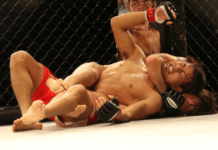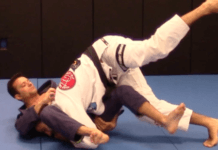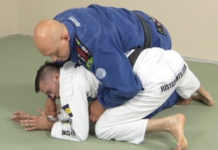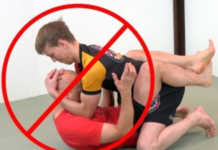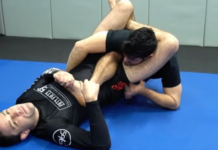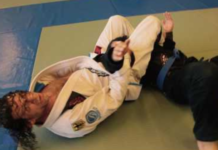BJJ as a sport and a martial art has its fair share of dangerous techniques that people have gotten hurt from. In this sense, the BJJ is very much like all other martial arts where people can end up easily getting hurt if they are not careful enough. Well, one of the most dangerous moves in the entire BJJ techniques arsenal is the move called the heel hook.
Origin of the Heel hook
This move can be found in the ancient art of the Greeks and the Romans. So, this move has existed for at least a two thousand years. But in modern times, there are a few myths about origin of the move. The biggest myth comes from the opinion of certain people that the move was created by Ivan Gomez. He was a person that used this move extensively in Brazil, and even Carlson Gracie mentioned in one interview that he was the original creator of the heel hook.
However, if you go back a little, you will see that this move was used extensively in Japan and specifically by Takeo Yano. He too disseminated the knowledge of this move in Brazil and he taught many of his students of the various intricacies behind this move.
The mechanics of the Heel hook
In order to perform this move, you will have to prevent your opponent’s knee from being able to turn to the side and you will then need to hook your opponent’s heel (hence the name) with your two hands. Then you will move the heel in the direction in which it shouldn’t move – it’s as simple as that.
It’s simple, but it can cause serious damage to your opponent’s ligaments, muscles, and tendons if left unchecked. Ligament tears can take months, and in extreme cases even years to heal properly. Your opponent may end up having to go to surgery. In fact, this move has been banned in some of the biggest BJJ organizations in the world, including IBJJF. It’s important for you to be careful when you will use it as to not make a mess out your opponent’s leg. Allow him to tap out and don’t push things unless you absolutely feel like you have to.
Implementing the heel hook
One of the best things (or worst things, depending on how you look at it) about this move is that it’s very versatile. In fact, it can be implemented from a wide variety of positions. Some practitioners have even made a system in which they let their opponent get a dominant position in order to get to the heel. One of the ways in which you can try out this move is from single leg x guard or if you want to risk more, Imanari roll. You can then hook your leg around your opponent’s leg and make him come down because of the loss of stability. Then you can use your hands to grab his heel and start twisting it. Be careful though – we have to again mention that this move can be devastating if you execute it properly.
50/50 guard
Another position from which you can do the heel hook is the 50/50 position. This is a relatively novel position that’s not supported by some of the old school Gracie practitioners because of the fact that it finds little use in a real combat scenario. However, it has its uses in BJJ sports bouts. This position has been made popular by Ryan Hall and what makes it so special is the fact that you can use it to do quite a few different leg locks. You guessed it – the heel hook’s included.
The nature of the 50/50 guard is that you will have your opponent’s leg in your arms and that your opponent will have your leg in his. So, the first thing you’ll want to do is to be careful about your own leg and triangle it with your other leg so that you can protect it. After you feel that your leg is safe comes the right time to attack your opponent’s leg. You can easily dive under his heel with your arm and then hooking it with your other arm. After this, you can start to twist it and finish it off.
The heel hook goes great with another potentially dangerous move that has been banned in many organizations – the reaping. This means that you will use your leg to twist your opponent’s knee and leg into a so-called valgus position – which is a very unstable position for the knee to be in. If you do this then your risk to tear off your opponent’s knee ligaments and this is the exact reason as to why this move is banned in many BJJ organizations. But the good side of this is that the reap goes hand in hand with the heel hook and it gives you the perfect opportunity to grab your opponent’s leg by the heel.
If you wish to learn more about the heel hook, we suggest that you see some of the BJJ matches of the members of the infamous Danaher Death Squad.
Defense
You would never want to be finished off with a heel hook. It’s one thing to get choked out with a rear naked choke and go to sleep for a few seconds, although even that can sometimes be very dangerous. It’s an entirely another thing to get finished with a heel hook and lose the walking capabilities of one of your leg. So, if you’re scared of this, then a wise thing to do is to agree with your sparring partner that none of you would go for knee reaps and heel hooks during your session. But if you wish to get the full BJJ experience, then you will want to learn how to defend the heel hook.
If you notice that your opponent is trying to reap your knee with his leg, then your immediate reaction would need to be to block this by turning your knee outwards, in the stable position. Then you can safely pull out your entire leg. If you let your opponent finish the reap and you try to yank it up with explosiveness and strength – then this may not work if your opponent has a firm grip on your heel. Also, if your opponent is trying to reap your knee then your first instinct would need to be to grab his leg and push it away from your own leg. You should do this before you end up falling under the pressure, so make sure that you do it quickly. If you wish to learn more about defending the heel hook – then see this video:
How to defend heel hook from 50/50 guard
And if you want to escape from the heel hook of the 50/50 guard, then you can grab one of your opponent’s arms while he’s trying to go for the heel hook. This will prevent him from finishing it because he will need both of his arms in order to succeed. A good option here is to beat your opponent to it and grab his heel first. There is an important element of speed in BJJ and sometimes, if you’re faster than your opponent, you will end up taking the match just by virtue of being faster.
If you’re doing no-gi BJJ, then the sweatiness of your leg and your opponent’s arms and legs may end up saving you. This is the one time when you may succeed in pulling out your leg with explosiveness and strength, as the lack of friction may help you pull your leg out safely. This escape maneuver is not foolproof though.

